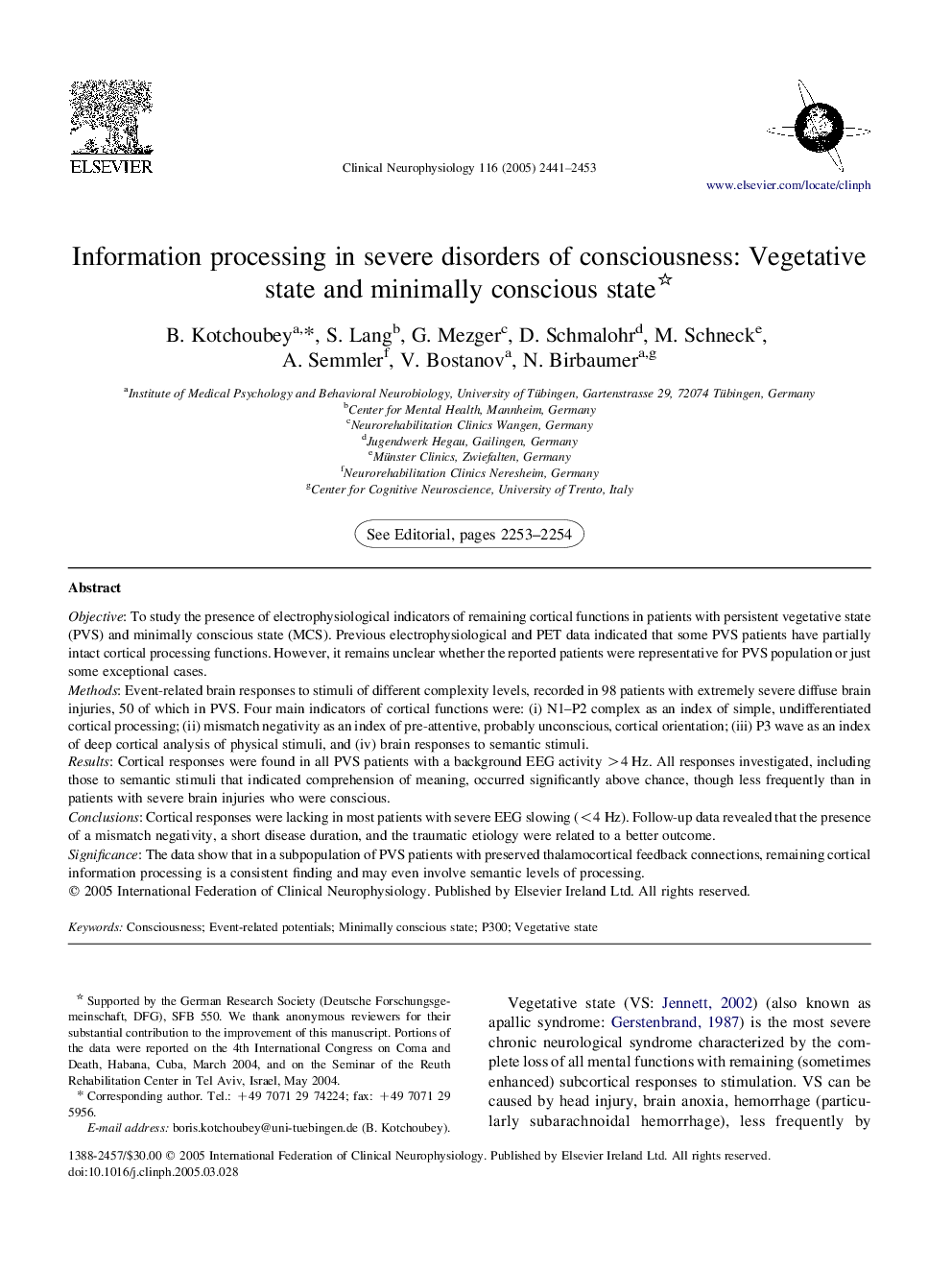| Article ID | Journal | Published Year | Pages | File Type |
|---|---|---|---|---|
| 3048280 | Clinical Neurophysiology | 2005 | 13 Pages |
ObjectiveTo study the presence of electrophysiological indicators of remaining cortical functions in patients with persistent vegetative state (PVS) and minimally conscious state (MCS). Previous electrophysiological and PET data indicated that some PVS patients have partially intact cortical processing functions. However, it remains unclear whether the reported patients were representative for PVS population or just some exceptional cases.Methods: Event-related brain responses to stimuli of different complexity levels, recorded in 98 patients with extremely severe diffuse brain injuries, 50 of which in PVS. Four main indicators of cortical functions were: (i) N1–P2 complex as an index of simple, undifferentiated cortical processing; (ii) mismatch negativity as an index of pre-attentive, probably unconscious, cortical orientation; (iii) P3 wave as an index of deep cortical analysis of physical stimuli, and (iv) brain responses to semantic stimuli.ResultsCortical responses were found in all PVS patients with a background EEG activity >4 Hz. All responses investigated, including those to semantic stimuli that indicated comprehension of meaning, occurred significantly above chance, though less frequently than in patients with severe brain injuries who were conscious.ConclusionsCortical responses were lacking in most patients with severe EEG slowing (<4 Hz). Follow-up data revealed that the presence of a mismatch negativity, a short disease duration, and the traumatic etiology were related to a better outcome.SignificanceThe data show that in a subpopulation of PVS patients with preserved thalamocortical feedback connections, remaining cortical information processing is a consistent finding and may even involve semantic levels of processing.
